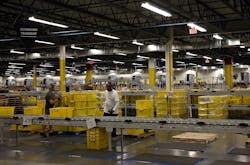Managers, Directors Would Leave Workplace for Flexible Work
More than one third of employees surveyed—including 34% of directors and 38% of managers—said they would change companies for an employer that embraces flexible work.
This is according to a new research from Unify, a communications software and services firm.
The findings showed that the highest flight risk is among those in the sought after Gen-Y or "millennials" demographic, with 43% of these employees saying they would change employers for a job that offers flexible work.
The company’s New Way to Work (NW2W) Index, is based on more than 900 global respondents at all levels across the healthcare, financial, education, manufacturing, and public sector markets, with the goal of learning how workers define the NW2W, and how important it is to them.
Among the findings, 47% of respondents defined the NW2W as working where they want, while 43% defined it as working when they want; with better collaboration technology being key to realizing it.
"Recent research from Dun and Bradstreet says the total cost of replacing an experienced employee can be up to 150% of that person's annual salary," said Bill Hurley, chief marketing officer at Unify.
"This type of 'flight risk' can be devastating for organizations,” Hurley added. “If companies want to attract and retain the best talent, they must implement flexible work options. The best enabler of this is collaboration technology that allows employees to work where and how they want, and easily collaborate to solve problems, and achieve results."
Additional findings from the NW2W Index include the following:
- More than one third of employees at all levels said they would actually leave their jobs/change employers to go to a job with more flexibility.
- More than half of all senior managers (director-level and higher) surveyed said their organizations are moving in the direction of more flexible work and expect to be there in the next two years.
- More than one third of respondents said they would drive initiatives to make flexible working terms a reality in their organization.
About the Author

Adrienne Selko
Senior Editor - MH&L, IW, & EHS Today
Adrienne Selko has written about many topics over the 17 years she has been with Endeavor Business Media and currently focuses on workforce development strategies. Previously Adrienne was in corporate communications at a medical manufacturing company as well as a large regional bank.
She is the author of Do I Have to Wear Garlic Around My Neck? which made the Cleveland Plain Dealer's best sellers list. She is a senior editor at Material Handling & Logistics, EHS Today, and IndustryWeek.
Editorial Mission Statement:
Manufacturing is the enviable position of creating products, processes, and policies that solve the world’s problems. When the industry stepped up to manufacture what was necessary to combat the pandemic, it revealed its true nature. My goal is to showcase the sector’s ability to address a broad range of workforce issues including technology, training, diversity & inclusion, with a goal of enticing future generations to join this amazing sector.
Why I Find Manufacturing Interesting:
On my first day working for a company that made medical equipment such as MRIs, I toured the plant floor. On every wall was a photo of a person, mostly children. I asked my supervisor why this was the case and he said that the work we do at this company has saved these people’s lives. “We never forget how important our work is and everyone’s contribution to that.” From that moment on I was hooked on manufacturing.
I have talked with many people in this field who have transformed their own career development to assist others. For example, companies are hiring those with disabilities, those previously incarcerated, and other talent pools that have been underutilized. I have talked with leaders who have brought out the best in their workforce, as well as employees doing their best work while doing good for the world.
